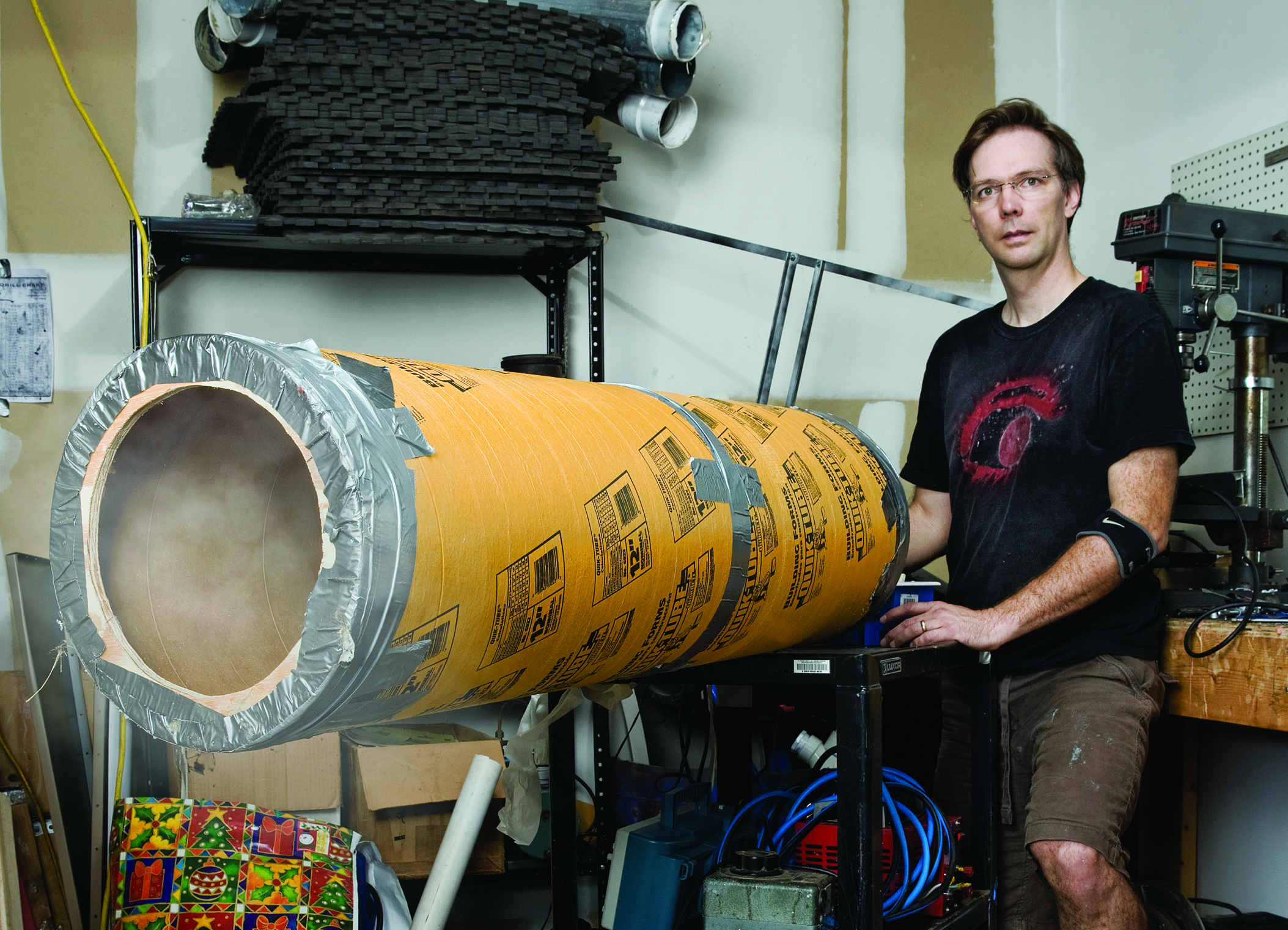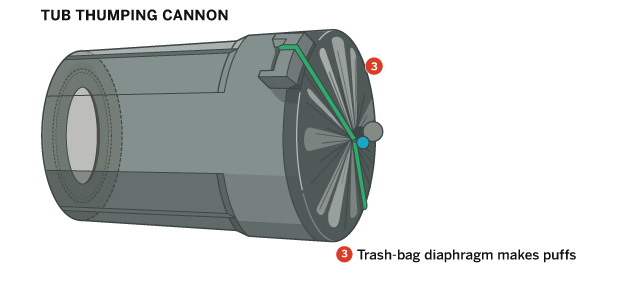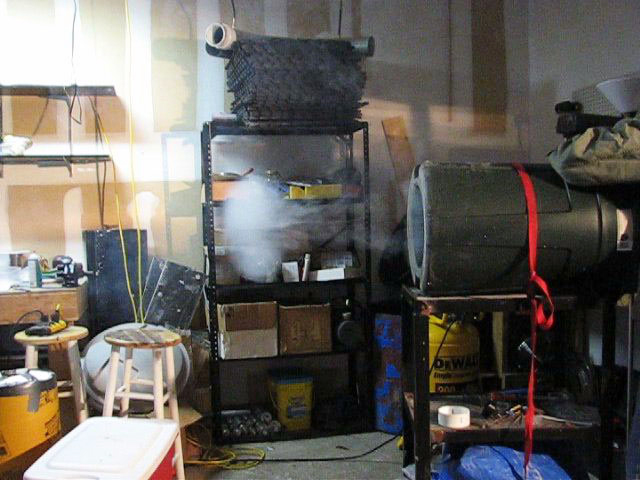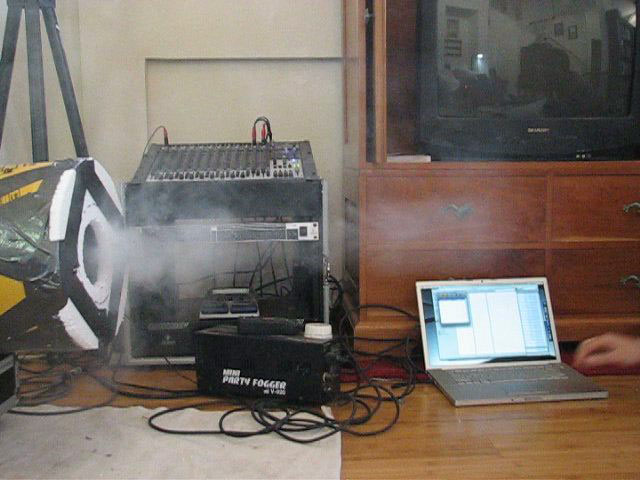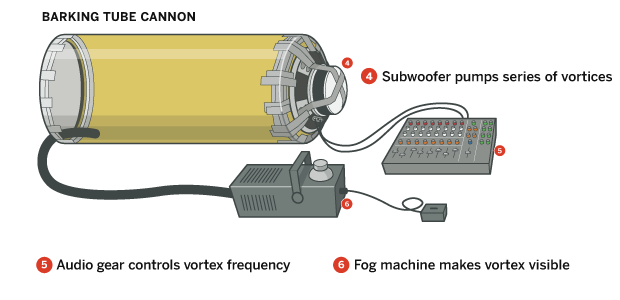I’d been aware of vortex cannons for quite some time, mostly as an interesting toy, and after I kept stumbling on the concept while touring the web, I decided I had to build my own. There’s something fascinating about taking a substance as ubiquitous and amorphous as air and transforming it into a coherent and persistent structure, almost like a crystal. I also hoped to find some use for my vortex cannon, perhaps to propel scents or give the touch of a ghost in a haunted house.

An extreme example of the vortex’s “reach out and touch someone” power is the military vortex gun, which uses explosives to drive air rings that can knock people over, or at least generate enough sound pressure to render an area uninhabitable. And the Shockwave Cannon created by Survival Research Labs delivers an invisible boot to the head.
This project doesn’t go that far, but it will show you how to make two different cannons: a 5-minute version as well as a computer-controlled version driven by a subwoofer
How it Works
Just as a sphere (ball) is the natural shape for solids to roll on a surface, the toroid (donut) is the natural shape for a gas to “roll” axially through space.

As air moves forward through the toroid’s inside edge, it draws air back around from the outside edge to replace it. The moving air exerts less pressure than the still air around it, so it stays in the donut shape.
Making a traveling vortex is easy: just push a puff of air evenly through a wide circular aperture. As the puff emerges, surrounding air travels in to fill the low-pressure zone behind it. This pinches it off and curls it back on itself to form the ring. You can make the ring visible by using smoke or fog from a fog machine.
An empty, topless gallon milk jug will make a vortex if you thump its bottom. The “Tub Thumping” cannon here is a larger version based on a garbage can.
The “Barking Tube” cannon uses a subwoofer to push out a series of vortices. The velocity curve of the impulse affects the vortex ring: an accelerating push makes it fly faster, while a decelerating push adds spin, making it fly slower and disintegrate dramatically.
Exploring the Vortex

With the computer-controlled Barking Tube, I wanted to experiment with different waveforms that would slowly pull the speaker cone back, and then fire it forward in a shaped pulse. I wrote a waveform generator in Java, but unfortunately found that the speaker wouldn’t follow the form. Instead, the cone moves in one “bounce” which pulls the smoke ring back into the cannon before it can detach and fly away. Either the audio synth in my computer or the amplifier itself filtered out most of the signal’s very-low-frequency components, distorting my waveform beyond any use. So I ended up using regular sawtooth waves, which work, but the only parameter to play with is the frequency. More work is needed.
These cannons will work only in still air; a breeze will break up the vortex structure. In general, faster and smaller vortices dissipate sooner than slower and larger ones. In a controlled, still environment, a big, slow vortex can travel a long distance.
The cannons are primarily meant for fun, and to illustrate the physics of the vortex. Any potential practical uses come from their ability to convey a blob of anything that’s about the same density as air through space, including things like bad smells, tear gas, or pepper spray. But with these, there is easily as much risk to the launcher as there is to the target.
Meanwhile, I am wondering whether it’s possible to launch a ring vertically, laden with a fine flammable powder such as powdered creamer, to form a flaming donut.
Happy vortexing!


